



Maija Haavisto is an author, journalist, medical writer, translator, photographer and person with ME/CFS.
Maija last wrote on LDN, Nootropics, Rituximab and Fads for Health Rising. In this piece Maija looks at the interesting intersections between the HINI flu and other infections, the Pandemrix HINI vaccine and a variety of sometimes bizarre disease which may have sprung up around them. Could they all be connected in some way?
Two Little Girls with Walking Sticks
In late 2014 Suomen Kuvalehti, a major Finnish magazine often compared to Newsweek, published a series of articles on CFS/ME by journalist Meri Valkama. The most noteworthy was the main one, about two children, Peppi and Aada, with CFS/ME. It was the first Finnish article about CFS/ME in children. In general, except for a few small pieces about the epidemics in late 1980s, there was barely any media coverage on CFS/ME in Finnish before 2011.
The article had a haunting picture of the two little girls standing with walking sticks. The parents had really struggled trying to get a diagnosis for the girls, as there are no pediatrists with knowledge of CFS/ME in Finland. It also detailed a somewhat successful attempt at hyperbaric oxygen therapy or HBOT.
The strangest thing about the article was that the girls were friends from before they were sick. This inevitably sparked suggestions that it was hysteria or something similar. What are the odds that two friends get sick with the same strange illness? (Unless it is CFS/ME, which can be triggered by an infection.)
A year after the series, however, Valkama updated the children’s story in the journal Suomen Kuvalehti. It turned out Peppi and Aada didn’t have CFS/ME after all, but PANS (pediatric acute-onset neuropsychiatric syndrome), an autoimmune brain disorder causing neurological and psychiatric symptoms.
They weren’t the only kids from Hämeenlinna, a town of 70,000 people, with this ailment. Provocatively titled “The Hämeenlinna Syndrome”, the article suggested something strange was going in Hameenlinna. It was likely, though, that just as occurred in the U.S. ”epidemics” some of this “clustering” simply occurred when people and doctors began to recognize the illness for the first time.
PANS and Narcolepsy
PANS is a somewhat controversial postinfectious autoimmune syndrome with symptoms of obsessive-compulsive disorder (OCD) and tic disorders, as well other psychiatric symptoms (e.g. separation anxiety, hallucinations or eating disorders), insomnia, urinary symptoms and clumsiness. Just as occurs in CFS/ME and vulvodynia, the symptoms tended, at least for some, to have an episodic course of relapses and near-remissions. Several several subtypes are believed to be present.
PANS has one striking thing in common with CFS/ME: it often has an extremely sudden onset often linked to an infection. However, unlike CFS/ME, PANS very rarely strikes adults and post-pubertal youths; the average age of falling ill is just six years old.
Peppi’s and Aada’s parents had found it strange that several of their daughters symptoms were not commonly found in the CFS/ME population. They recognized, though, CFS/ME can also cause all kinds of neurological symptoms – and that psychiatric symptoms are not those you want to emphasize when seeking treatment for CFS/ME. Interestingly, CFS/ME expert Jay Goldstein has stated that CFS/ME and OCD – which is found in PANS – very rarely coexist, because the neurotransmitter finding in them are different.
Narcolepsy
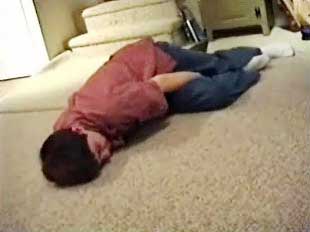
“Narcoleptic Minute 006 0001”. Licensed under CC BY-SA 3.0 via Wikimedia Commons – https://commons.wikimedia.org/wiki/File:Narcoleptic_Minute_006_0001.jpg#/media/File:Narcoleptic_Minute_006_0001.jpg
Markku Partinen, a well-known and prolific Finnish sleep reseacher finally made the diagnosis. Partinen had also studied narcolepsy, an autoimmune disease causing excessive sleepiness that is sometimes confused with CFS/ME, especially by doctors who cannot differentiate between fatigue and drowsiness.
Besides excessive daytime sleepiness which often occurs very rapidly, narcolepsy is characterized by a lack of unrefeshing sleep, a sudden loss of muscle function (cataplexy), paralysis when emerging from sleep and vivid wild dreams. (It is possible to have both CFS/ME and excessive daytime sleepiness.) In narcolepsy the wakefulness-regulating orexin (hypocretin) neurons in the brain are destroyed, resulting in severe sleepiness and usually also cataplexy.
Narcolepsy and the Pandemrix H1NI Flu Shot
Narcolepsy has been a topic of much discussion in Finland after the Pandemrix shot for H1N1 flu shot was found to have caused narcolepsy first in children and later in adults. The trigger was first thought to be a new adjuvant in the vaccine that was not used in other H1N1 shots, but later studies suggested a specific viral protein was to blame. (Probably both work together). Those persons able to prove vaccine-related injury received compensation from the state.
Narcolepsy has a heavy genetic predisposition and sometimes infections can trigger it as well. It is worth noting that a Chinese study indicated that the H1N1 influenza is able to trigger narcolepsy in suspectable individuals.
Pandemrix has also been suspected of causing PANS but because most Finnish children were vaccinated against the H1N1 flu it’s been hard to draw a connection (i.e. find a control group). This is a common problem with vaccines: most people receive vaccines and when they get sick with anything, they look for a cause and associated it with the vaccine. Statistically even some heart attacks will occur on the days of vaccination without any causality.
CFS/ME and the H1N1 Vaccine
CFS/ME has also been anecdotally connected to the H1N1 vaccine, especially in Sweden which also used the Pandemrix version of the vaccine – and experienced increased cases of narcolepsy. An increased prevalence of postural orthostatic tachycardia syndrome or POTS has also been suggested. POTS, which is a form of dysautonomia that presents with symptoms similar to those found in CFS/ME, often has a viral trigger.
Hanna Nohynek, a vaccine researcher at Finnish health authority THL, commented in December 2012 to the Finnish tabloid newspaper Iltalehti that while no vaccine-connected CFS/ME cases had been reported in Finland, she believed they probably exist.
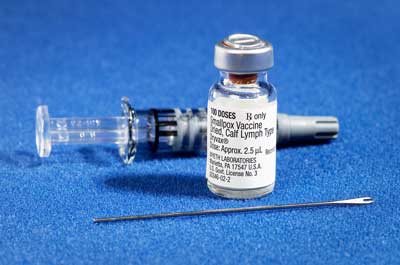
Did the vaccine trigger ME/CFS in some or was it the flu itself? Either way immune activation was involved.
That was an extraordinary admission coming from a government official given according to Finnish authorities CFS/ME does not even exist. (Some patients report that they had, in fact, reported their cases to THL but CFS/ME may be coded under false ICD-10 codes in Finland, creating confusion.)
In 2015, however, a THL response signed by Nohynek to a letter from patients about the Pandemrix’s connection with CFS/ME, POTS and PANS expressed doubts that they were connected. The letter noted that in the recent years new diagnoses of G93.3 (CFS/ME), I49.8 (which includes POTS), G93.8 (which includes PANS) and F42.8 (OCD) have been more common in patients who did not receive the H1N1 vaccine.
That could suggest that unvaccinated people were more likely to get the flu and come down with CFS/ME. That’s a possibility given the many infections that can trigger CFS/ME but patients, cast doubt on Nohynek’s analysis. They noted that CFS/ME is very often miscoded with F (functional) ICD-10 codes and the other ICD-10 codes also include other diseases or are often not diagnosed or misdiagnosed.
This is, of course, not the first time that CFS/ME has been sometimes belatedly connected to vaccination. Dr. Byron Hyde, who originally said that only enteroviruses cause ME, now believes that vaccines, especially hepatitis B, but rarely the influenza vaccine (no mention of H1N1) cause “secondary myalgic encephalomyelitis”, which usually has an onset within a few days of vaccination.
The PANS and narcolepsy connection to the Pandemrix vaccine and their resemblance to CFS/ME, however, makes the question particularly interesting.
PANS, Streptococci and Autoimmunity – the Infection Connection
Streptococci Bacteria Induced Illnesses
PANS has also been associated with infections. In fact, PANS used to be called PANDAS, for Pediatric Autoimmune Neuropsychiatric Disorders Associated with Streptococcal Infections. (Some PANDAS resources don’t mention any other possible causes though vaccines are listed as being able to worsen it.) Other sources call non-strep triggered PANS PITANDS (Pediatric Infection-Triggered Autoimmune Neuropsychiatric Disorders.)
Narcolepsy, interestingly, has also been associated with group A streptococci infections. As in CFS/ME PANS patients may also harbor other infections, such as Lyme and mycoplasma.
Mold
Markku Partinen has suggested that in some PANS cases mold exposure may play a role. (One PANS patient got much better after removal from such an environment.) There are several mold-infested schools in Hämeenlinna, and mold is a major problem in Finland in general. Mold toxins can cause an illness very similar to CFS/ME. Mold induced CFS/ME can sometimes be cured by removing the mold, but often lingers on permanently.
Encephalitis Lethargica – Another HINI Flu Associated Illness
A third illness connected to both streptococci and influenza is called encephalitis lethargica (EL). This brain disorder causes severe lethargy – at its worst patients can seem comatose. Several different forms have been identified, including one similar to narcolepsy which produces hypersomnolence and can be fatal. (Narcolepsy is not thought to be fatal.)
Found in epidemic form in the early 1920’s, encephalitis lethargica was thought to be connected to the Spanish flu pandemic of 1916-1918 – an H1N1 type influenza. Later, evidence suggested streptococcal pathology. EL is a remnant of history; no new cases have appeared since the flu epidemic.
The epidemic and stupor-inducing nature of encephalitis lethargica is intriguing, though, given the extreme fatigue associated with CFS/ME – and the outbreaks it was originally associated with.
Some doctors also believe EI is still around. The Finnish broadcasting company YLE posted a horrifying story about a young man named Ville who’d been diagnosed as having H1NI induced narcolepsy. His case, however, seemed something much worse.
In the deep mental disability that resulted Ville resembled both a small child and a demented adult. He is barely able to stay awake, has frequent bouts of severe aggression and extreme confusion, and urinary and fecal incontinence. His heartbroken mother reported Ville said “I can’t remember what it is like to be a human”.
Could he have a form of encephalitis lethargica? Or a combination of narcolepsy and PANS?
Streptococci (but not influenza or flu shot) have also been connected to some other autoimmune diseases, including rheumatic fever, a once common condition which damages the heart valves, and Sydenham’s chorea, a peculiar brain disorder causing involuntary movements. Some believe that PANDAS and Sydenham’s chorea may be the same disease.
Although CFS/ME has been connected to a dozen different infections of viral and bacterial origin and including fungal and amoeba infections it has not been associated with streptococci infections.
Causes
Markku Partinen believes PANS has a polymicrobial origin. Similar to CFS/ME several triggers, including bacterial, fungal and viral agents have been associated with the disease. Several different infections have sometimes been found in the same patient as well.
At a presentation at a Finnish sleep specialist conference, Partinen talked about the CFS/ME epidemics. This was a novel occurrence as CFS/ME is rarely acknowledged in Finland. He believes CFS/ME is a form of post-infectious dysautonomia and discussed antibiotic treatments but did not discuss its possible infectious triggers. He explicitly said that neuroborreliosis (Lyme) must be excluded, it is not CFS/ME. He suggested that the newly re-discovered lymphatic system in the brain may be involved in its pathogenesis.
Like some autoimmune diseases, narcolepsy is strongly associated with a certain types of human leukocyte antigens (HLA). If you are genetically predisposed to feature certain HLA types, you most likely still won’t develop narcolepsy, but without the genetic predisposition you have little chance of getting it.
Partinen believes that PANS and CFS/ME may also be associated to distinct HLA types (although not the same as narcolepsy.) A definitive HLA type has not been identified in CFS/ME although some studies suggest one may be present.
The Dopamine – Infection Connection
Some readers may be familiar with the popular Hollywood movie “Awakenings” starring Robin Williams. Based on a book by the famous neurologist Oliver Sacks, the movie showcases patients who exhibit a peculiar lack of “volition“. They seem almost like statues. They have trouble starting things but once a process is started they can finish them.
If someone plays the first card in a card game they can play cards. One patient could not walk to the water tap because the checkered pattern in the floor ended too early. After Sacks had the floor painted the patient could reach the tap.
Sacks had noticed that L-DOPA, the precursor to neurotransmitter dopamine used in the treatment of Parkinson’s disease, worked almost miraculously for encephalitis lethargica patients. They awoke from their zombie-like states into normal consciousness and were able to live almost normally.
Unfortunately, the effects of L-DOPA were very short-lived and the patients quickly built tolerance. Over time they required massive doses which caused serious side effects. After the drug was stopped the patients returned to their vegetative states.
Still, the dopamine -infection connection is intriguing. Andrew Miller’s research indicates that immune activity triggers dopamine reductions in hepatitis C patients given interferon. Infections, of course, often trigger CFS/ME patients – and they exhibit similar dopamine issues. In their immobility the encephalitis lethargica patients which benefited so much from L-dopa – look somewhat like severely ill ME/CFS patients.
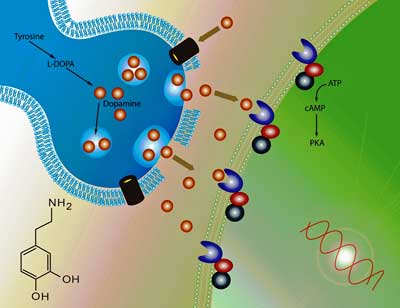
Some infections appear to be able to knock out dopamine production causing problems with fatigue and movement
Parkinson’s disease is caused by the destruction of dopamine producing neurons. It shares several symptoms with all these diseases. Parkinson’s impairs movement, often causes drowsiness and can sometimes have a narcolepsy-like component, including some orexin neuron loss. Parkinson’s medications can also cause sleepiness, even to the point of sudden sleeping attacks.
Dopaminergic mechanisms also appear underlie both Sydenham’s chorea and PANS. Several studies suggest two subgroups of PANS exist, one of which has antibodies against D2 dopamine receptor. Neither drugs that increase dopamine levels or those that block dopamine receptors seem to be helpful in PANS, however.
Dopaminergic Parkinson’s drugs, including L-dopa, are not thought to help narcolepsy (with the potential exception of the MAO inhibitor selegiline), although modafinil, the main stimulant treatment used in narcolepsy, is believed to act via dopamine receptors. (Modafinil also helps many CFS/ME patients, but is prone to “pooping out” over time.)
Several dopamine drugs (pramipexole, ropinirole and rotigotine) are, in fact, sometimes used to treat CFS/ME and/or fibromyalgia. Two studies suggest pramipexole and ropinirole may be helpful in fibromyalgia, but sadly no studies have been done yet in CFS/ME. Some ME/CFS and FM patients also benefit from the amino acid tyrosine, a precursor of dopamine.
Other Treatments
Antibiotics are often helpful in PANS, which is unusual in autoimmune diseases. (Some antibiotics are used in autoimmune diseases, and CFS/ME, because of their anti-inflammatory effects, but the benefits are usually lost once the drug is stopped.) Recurrent strep infections are known to cause PANDAS relapses and treated with antibiotics, usually amoxicillin or azithromycin. Partinen suggests other infections in PANS patients also need treatment, I am not sure which antibiotics he uses.
Besides antibiotics, PANS is often treated with immunomodulators, such as steroids, plasmapheresis/plasma exchange and intravenous immunoglobulin (IVIG) which are quite standard treatments for rapid-onset or quickly worsening autoimmune diseases. The first two are rarely useful in CFS/ME, but IVIG can be very helpful.
Immunomodulatory drugs have generally not been found helpful in narcolepsy. There are conflicting, usually disappointing reports on the success of IVIG. Narcolepsy is usually treated with stimulants, especially modafinil, and Xyrem (sodium oxybate) – a sedative drug which has also been studied in CFS/ME.
About the Author
Maija Haavisto is a Finnish CFS/ME patient activist, the author of Reviving the Broken Marionette: Treatments for CFS/ME and Fibromyalgia. She has had other medical books published in Finnish, including a book about autoimmune diseases.
Other references
Valkama Meri. Useat lääkärit kieltävät Aadan ja Pepin sairauden – mystinen CFS. Suomen Kuvalehti 26.9.2014. (in Finnish)
Valkama Meri. Harvinaista lasten PANS-aivosairautta löydetty Suomesta. Suomen Kuvalehti 1.10.2015. (in Finnish, partial article, full article only in print)
Suomesta löydetty harvinaista lasten aivosairautta. Ilta-Sanomat, 2.10.2015. (in Finnish)
Fruktad hjärnsjukdom efter influensavaccin. Expressen, 13.12.2012. (in Swedish)
Blev sjuk efter vaccineringen – nu lever hon i mörker Borås Tidning, 29.2.2012. (in Swedish)
Rokotteesta aivosairautta? Iltalehti 15.12.2012 (in Finnish, print only)
Goldstein Jay. Betrayal by the Brain: The Neurologic Basis of Chronic Fatigue Syndrome, Fibromyalgia Syndrome, and Related Neural Network Disorders. Haworth Medical Press 1996. p. 159.
Hyde Byron. Presentation at ME Conference and the accompanying print booklet. 26.9.2015, Amsterdam, The Netherlands.
Partinen Markku. CFS ja PANS kliiniset löydökset ja diagnostiset kriteerit. Presentation at Valtakunnalliset unilääketieteen koulutuspäivät. 26.-27.10.2015, Helsinki, Finland. (In Finnish)
Swedo Susan E. PANDAS Presentation in Austin TX October 2011.



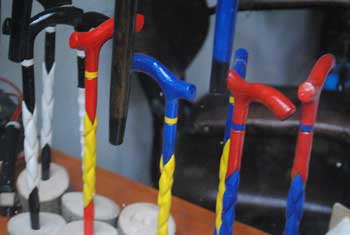
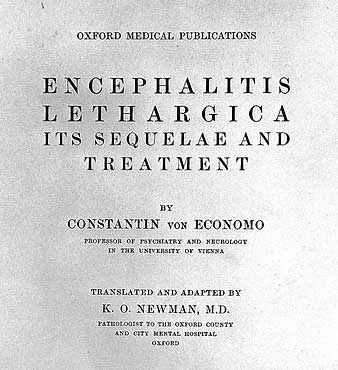




Now 73 years old. At the age of 6 my sibling had whooping cough. I was ” still. ” recovering from measles. I was injected with whooping cough vaccine.When I
did some research I discovered a report that the vaccine had not been tested.
I was really ill after the injection, my arm was really swollen and very hot and painful.
The rest of my childhood I was described as a sickly child. I suffered constant infections,
growing pains, no energy. At the age of 10 I was DX with migraine. I went onto have
Many hormone problems. At the age of 21 I gave birth without problems after a pregnancy
fraught with illness.Same again 2 years later with birth of
2nd child constant illness until
I was 33 for horrendous periods I had a hysterectomy. I had an injury then developed Fibromyalgia. Then ME
Under active thyroid etc.
Now DX pernicious anaemia.
I now suffer chronic all over pain fatigue.
So bad now with many more medical problems osteoarthritis compromised immune system.
I have no life, spend my my time in bed. Housebound.
I feel strongly that injection in 1947 was the start of
A lifetime of pain.
Now 73 years old. At the age of 6 my sibling had whooping cough. I was ” still. ” recovering from measles. I was injected with whooping cough vaccine.When I
did some research I discovered a report that the vaccine had not been tested.
I was really ill after the injection, my arm was really swollen and very hot and painful.
The rest of my childhood I was described as a sickly child. I suffered constant infections,
growing pains, no energy. At the age of 10 I was DX with migraine. I went onto have
Many hormone problems. At the age of 21 I gave birth without problems after a pregnancy
fraught with illness.Same again 2 years later with birth of
2nd child constant illness until
I was 33 for horrendous periods I had a hysterectomy. I had an injury then developed Fibromyalgia. Then ME
Under active thyroid etc.
Now DX pernicious anaemia.
I now suffer chronic all over pain fatigue.
So bad now with many more medical problems osteoarthritis compromised immune system.
I have no life, spend my my time in bed. Housebound.
I feel strongly that injection in 1947 was the start of
A lifetime of pain.
This is the first time I have posted comments on any
Website.
Shirley, I’m so, so, so sorry. Your story is heartbreaking. I wish you well.
Shirley you are not alone. I have had terrible problems after a shingles shot. I have always been in terrible health and have had flu shots every year due to my health. I am 59 and believe that some of those sick days they said I had a virus the virus never left. Some of them live on in our systems. Doctors have no proof when they throw out opinions. I am glad to see some study going on to find out why we are all in the shape we are in.
Cheryl, I’m sorry that you got health problems after the shingles shot – so confusing and disappointing. I got a strange reaction to my shingles shot – a week later I got shingles! It was a mild case, not that much pain, but I was sick for a month.
Thanks for this report which I found particularly interesting because almost 50 years ago I had a series of Strep infections culminating in rheumatic fever. Afterwards my health fell apart – fatigue and lots of strange infections and then peculiar psychiatric symptoms. Many years later I read about PANDAS and realize that that is what I had had. Someone turned me on to Adele Davis’ book, “Let’s Get Well,” and after taking the vitamins she recommended all my symptoms went away. Whew! But then 8 years ago I got CFS/ME and I’ve been trying almost every thing under the sun to chase it away. I tend to think that the CFS/ME could be related to my post Strep illness.
I was interested that the two Finnish girls got some positive results from hyperbaric oxygen therapy. I’ve been getting five one hour sessions of HBOT for the past two weeks and I’m happy to say that it really helps! If I go into a session feeling awful, I come out feeling OK. If I got in feeling relatively OK, I sometimes come out feeling wonderful. So far feeling good usually lasts only about three hours – bummer!
I remember reading on Health Rising that ME/CFS people weren’t trying HBOT because it was prohibitively expensive. My doctor charges me $50 a session and this does add up. But she is encouraging me to rent a unit ($800 a month) or even buy one. She says you can get them for about $3,000. She also thinks I might need to do two one hour sessions a day – This seems like an extreme lifestyle. But it’s so terrific to feel good for a few hours a day that I would consider it if I had one of these low pressures chamber at home. I can’t go on paying $250 a week. Unfortunately she says HBOT doesn’t work that well if you do it only one or two days a week – the effects are cumulative. I have found this to be true for me.
Your story is almost identical to mine, Rachel. I caught a strep infection 62 years ago. It started as Scarlet Fever,which was unfortunately not diagnosed in time to cure it. It went underground causing Rheumatic Fever, which is an autoimmune disorder triggered by the bacterial infection. At the same time, the strep entered my CNS causing Sydenham’s Chorea.Rheumatoid Arthritis followed. This didn’t burn itself out until I was nearly 40. It is impossible to determine ahistorically when the fibromyalia began, but it definitely took hold in childhood. If doctors know what caused our ME/CFS in the first place, can they not treat it somehow with an antibiotic? I sure wish I could have a few years without being plagued by so many symptoms. I’m sure you do, too.
Marline, I’m so sorry that fibromyalgia hit you so young! Major bummer. Sydenham’s chorea doesn’t sound like any fun at all. I’m glad that it burned itself out ultimately.
My CNS symptoms (PANDAS) involved getting a bit paranoid and then developing some obsessive compulsive behaviors to deal with my fears. I knew it was nuts but I didn’t have a name for it and I didn’t seek treatment for it. The rheumatic fever started my life of inflammations – it started with very bad ankle pain. I got antibiotics right away, which was good. I’m very grateful that someone turned me on to Adele Davis’ vitamin protocol and that it got rid of the OCD symptoms and beat back the inflammations for a long time. My doctor did talk about putting me on antibiotics for 5 years, but decided against it, which is just as well because after I started mega vitamin therapy I never got another strep and a lot of other crappy symptoms went away, too. The whole event gave me a fascination with the power of nutritional supplements.
I hope you can get some relief from your fibromyalgia, Marline.
Sounds like Lyme disease to me, get tested through igenex lab in California.
Rhonda, I’m not quite sure if you were responding to me. I recently had the IgeneX Lyme test and I don’t seem to have it. The weird thing is that I had about 10 years or more of constant inflammations following tiny injuries. Then I went on a gluten free diet and they mostly stopped. When I gave up dairy I had even fewer problems with pain and inflammation. But when the inflammations stopped, I got chronic fatigue syndrome – I traded pain for fatigue. I think the fatigue is worse – it’s much more debilitating.
Kiitos Maija että kirjoitat tästä vaikeasta tilanteesta, josta kärsii suuri joukko perheitä tällä hetkellä Suomessa. Ei diagnoosia, ei hoitoa. Meillä onni että olemme saaneet apua ja sitä toivon kaikille muillekin. Myös julkisen puolen heräämistä asiaan!
Tiina Koistinen (ASIA, adjuvantin aiheuttama artriitti + rokotteen aiheuttama CFS) ja kaksi tytärtä, rokotteen aiheuttama POTS ja CFS
Hi. A fine article – thank-you.
I hope you don’t mind a minor suggestion for correction, opposite your statement “In fact, PANS used to be called PANDAS …”.
According to pandasnetwork.org, PANDAS is a subset of PANS that is triggered by strep. I understand PITANDS to be an older name not really being used in the latest literature/discussions.
I am eyeing your book Reviving the Broken Marionette with great interest.
The name PANDAS was used when it was believed strep was always the cause. When that was discovered to be false, new names were introduced.
Kiitos minunkin puolestani hyvästä kirjoituksesta joka kiteyttää tilannetta hyvin.
On täysin sietämätön tilanne taistella vakavien sairauksien lisäksi siitä että saisi asianmukaista hoitoa ja tukea. Toistaiseksi ei valoa näy tunnelin päässä vaan tuntuu että menemme aina vain alemmas. Pans diagnoosina tuntuu aiheuttavan Suomessa erityistä vastarintaa.
Perheessämme 2 poikaa jolla diagnosoitu Pans ja Pots sekä minulla Pots
As soon as I read this article I remembered seeing a documentary on Encephalitis lethargica that was show on the BBC in 2004. I managed to find it on the internet and the link is below. It showed that cases are still occurring in the UK
In the documentary a case of the disease that occurred in the UK was highlighted and revealed how the girl was cured with antibiotic treatment. The mystery cause of the disease was discovered to be streptococcus throat infection.
https://www.action.org.uk/touching-lives/december-2004/medical-mystery
Yes, the documentary and the streptococcal origin are both mentioned in the article.
I looked to see if the actual documentary can be seen on Utube but I couldn’t find anything. 2004 was too long ago I think.
below is another link to a BBC news article about the documentary that has a bit more information about the illness and symptoms in it
http://news.bbc.co.uk/1/hi/health/3930727.stm
That link is included in the article. It’s too bad that the documentary isn’t available, it would be interesting to see it.
Very interesting. Thanks for taking the time to make all these connections. One tiny thing, the vaccine is spelled “Pandemrix” in English and you have it as “Pandemix” four times, I believe. You can delete this comment or edit as you like.
Thanks. Cort must have “fixed” it while editing as I just checked my original and it says “Pandemrix” on every occasion. (It would be hard to get it wrong considering the Finnish news headlines used to be full of that name on daily basis during the heat of the narcolepsy scandal!) I’ve now fixed it.
I do not believe vaccines trigger this, I had not had the swine flu vaccine before I got ill, I got it after suspected swine flu, it is only since i got ill that i have been having the vaccine (not before) therefore in my case which is a typical case there is no link at all. In actual fact NOT having the vaccine and having flu caused by ME. I think this is actually a dangerous link as it will put people off the vaccine and lead to more people having ME.
No one is saying CFS/ME is always caused by vaccines. A very small minority may be. I am very pro-vaccine, I would never skip my yearly flu shot – in fact this winter I took it twice, because the first one made me feel _much_ better for a week and I was hoping the second one might, too. The H1N1 vaccine also made me, and a very severely ill friend, better for a week.
I think all healthy people without contraindications and most people with CFS/ME should get the flu vaccine every year, if they haven’t got bad side effects from it. It saves lives.
It’s also true that influenza by itself can trigger narcolepsy and possibly also CFS/ME and PANS.
Maija, that’s so interesting that the flu shot made you feel better. Like you, I get my flu shot every year because I really don’t want to get the flu. I remember getting the flu decades ago and it was really awful. My husband and I were miserably sick in bed for 5 days and then we didn’t feel well for a couple of months. Last fall, however, I read that if you get the vaccine every year it is less effective. I make sure to get the type of vaccine that doesn’t contain mercury as a preservative. Also I get the double strength kind they give to people over 65. I haven’t noticed any reactions. Next fall I’ll pay attention to whether I feel better after the shot.
I agree, Maija, that vaccines are good – they save lives. But some people probably do get bad side effects which is very unfortunate.
Yeah, it’s interesting. Besides my friend I know one another person who has experienced it. I’ve had it just twice even though I’ve taken many more flu shots. But for all of us the improvement has lasted for a week.
There’s really no need to “pay attention” to the improvement if you get it – for me the last time was almost like I was healthy. I felt mentally super sharp and almost didn’t tire at all. My book Reviving the Broken Marionette has an appendix which documents how vaccines not only can sometimes be bad in CFS/ME, but have occasionally been used as treatments. Even thiomersal, the mercury ingredient by itself, has been used by one doctor to treat CFS/ME. (I’m not saying it’s a good idea, just that it’s been done.)
Where did you read that getting the flu shot every year makes it less effective? It’s not true, quite the opposite.
Maija, too bad the improvement you felt from the flu vaccine lasted only a week. But a week of feeling almost healthy must have been wonderful, especially the part about feeling mentally super sharp!
Where I read that getting a flu shot every year makes it less effective was in the Boston Globe. There was an article last fall reporting on a study.
I was looking at your book this morning and noticed that I’d never read the appendix. Looks interesting – I’ll take a look at it today.
Maija, I found a reference to the study that indicated that if you get a flu shot every year they become less effective. Getting a shot is better than not, however.
http://www.statnews.com/2015/11/11/flu-shots-reduce-effectiveness/
We live in such a question mark, don’t we? I had a bad case of histoplasmosis in 1982, and was never the same after it. I was hospitalized for three weeks in isolation (because docs thought we had Legionairre’s Disease), but finally the CDC found that it was histo. I probably got my RA from that, so why not all the other stuff? Doctors don’t seem to be interested in the fact that I had that, but I sure would love to find out if anyone else had a similar situation.
So much more research is needed into what happens to the body during an infection…..
you got that right cort!!!